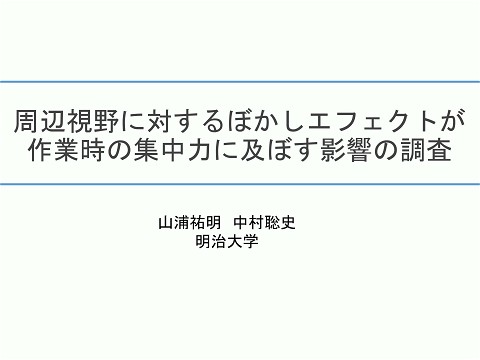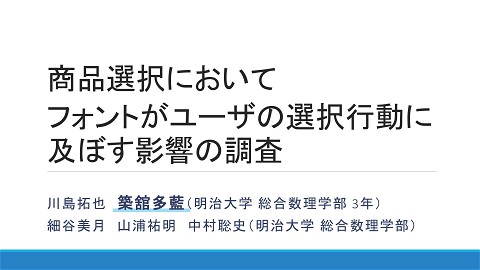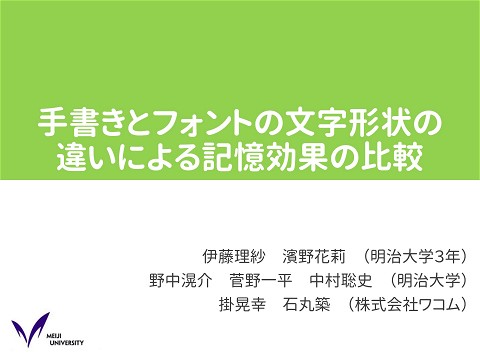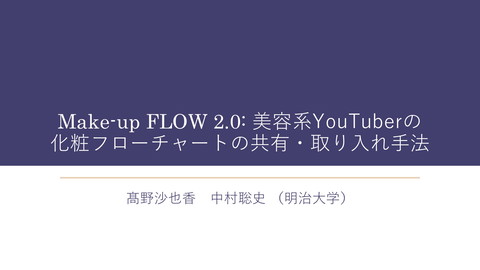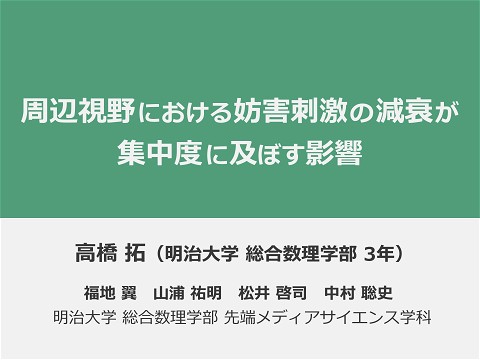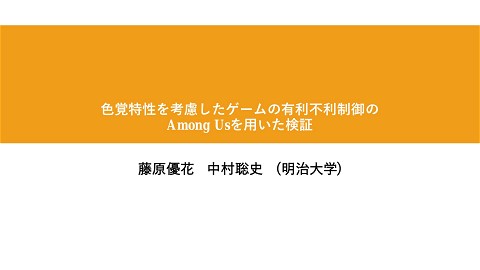Sonification-based Steering Assistance for Curve Driving: Evaluations in Virtual and Real-World Environments (ICDA2025)
1.1K Views
July 03, 25
スライド概要
Sonification-based Steering Assistance for Curve Driving: Evaluations in Virtual and Real-World Environments
ICAD2025
明治大学 総合数理学部 先端メディアサイエンス学科 中村聡史研究室
関連スライド
各ページのテキスト
Sonification-based Steering Assistance for Curve Driving: Evaluations in Virtual and Real-World Environments Sayuri Matsuda, Satoshi Nakamura, Kento Watanabe (Meiji Univ.) Takeshi Torii, Hideyuki Takao, Yuki Mizuhara, Saeri Shimizu (SUBARU)
Background • Novice drivers often struggle to drive through curves • Objective – To realize a practice method that helps novice drivers become better
Measuring Good Driving Steering Corrections n 1 t Steering Corrections = 1 Good Fewer steering corrections Steering angle Steering angle A steering correction is defined as a change in the direction of the steering wheel's rotation speed. 3 5 1 7 9 2 4 6 8 Steering Corrections = 9 Bad More frequent steering corrections t
Our Sonification Method • Our method generates a musical scale in real time, corresponding to the steering angle. [Matsuda 2022] – This method allows drivers to perceive the steering angle through sonification.
Good vs. Bad Driving Example Good Fewer steering corrections Bad More frequent steering corrections
Two types of Prototype System • Virtual Environment – Assetto Corsa • Real-World Environment – Actual vehicle
Prototype for Virtual Env.
Prototype for Real World Env. First Author (Sayuri Matsuda)
Course (Virtual and Real) • In each environment, we used Automotive Business SUBARU R&E Center (SKC) – Length: 1800m (2-3 minutes per lap) – Virtual one was generated from the real.
Experiment 1: Virtual Env. • N=26 (between subjects) • Comparative Methods – Sonification (Our Method) – No feedback (Baseline Method) • Procedure • Main Measure – Reduction in the number of steering corrections from pre- to final-exam
Experiment 2: Real-World Env. • N=10 (between subjects) • Comparative Methods – Sonification (Our Method) – Instructor (An instructor sits next to the driver and provides guidance) • Procedure • Main Measure – Reduction in the number of steering corrections from pre- to final-exam
Results: Experiment 1 (Virtual) • Participants paid more attention to the course with the baseline method than with ours. • Reduction ratio of steering corrections Our method > Baseline (No feedback)
Results: Experiment 2 (Real) • Reduction ratio of steering corrections – No difference • Our system was effective for low-skill drivers, but not for high-skill drivers. • Some felt pressure from the instructor. Proposed: Effective Proposed: Ineffective Instruction Pressure?
Discussion • Positive – Our method was effective to reduce steering corrections in virtual environment. – Our method performed as well as human instructors in real-world environment. • Some novice drivers get frustrated when being instructed, especially by their fathers. ➔ This method works better for them. • Negative – An experienced driver said sonification conflicted with engine sounds used to manage speed.
Conclusion • Steering-angle sonification may help novice drivers improve without an instructor. • Future work – Apply our method to car parking situation – Present guide sound before the next curve
